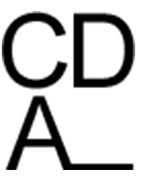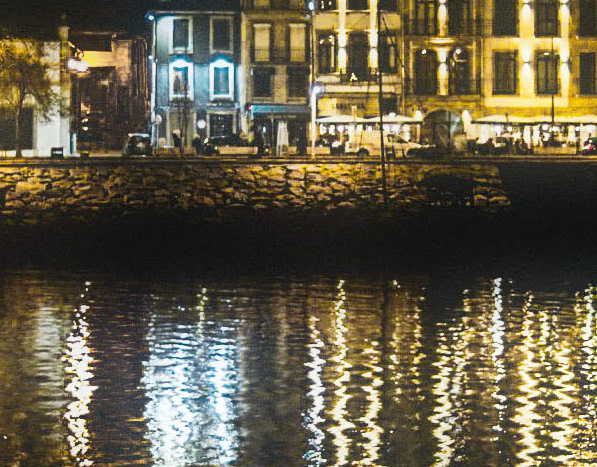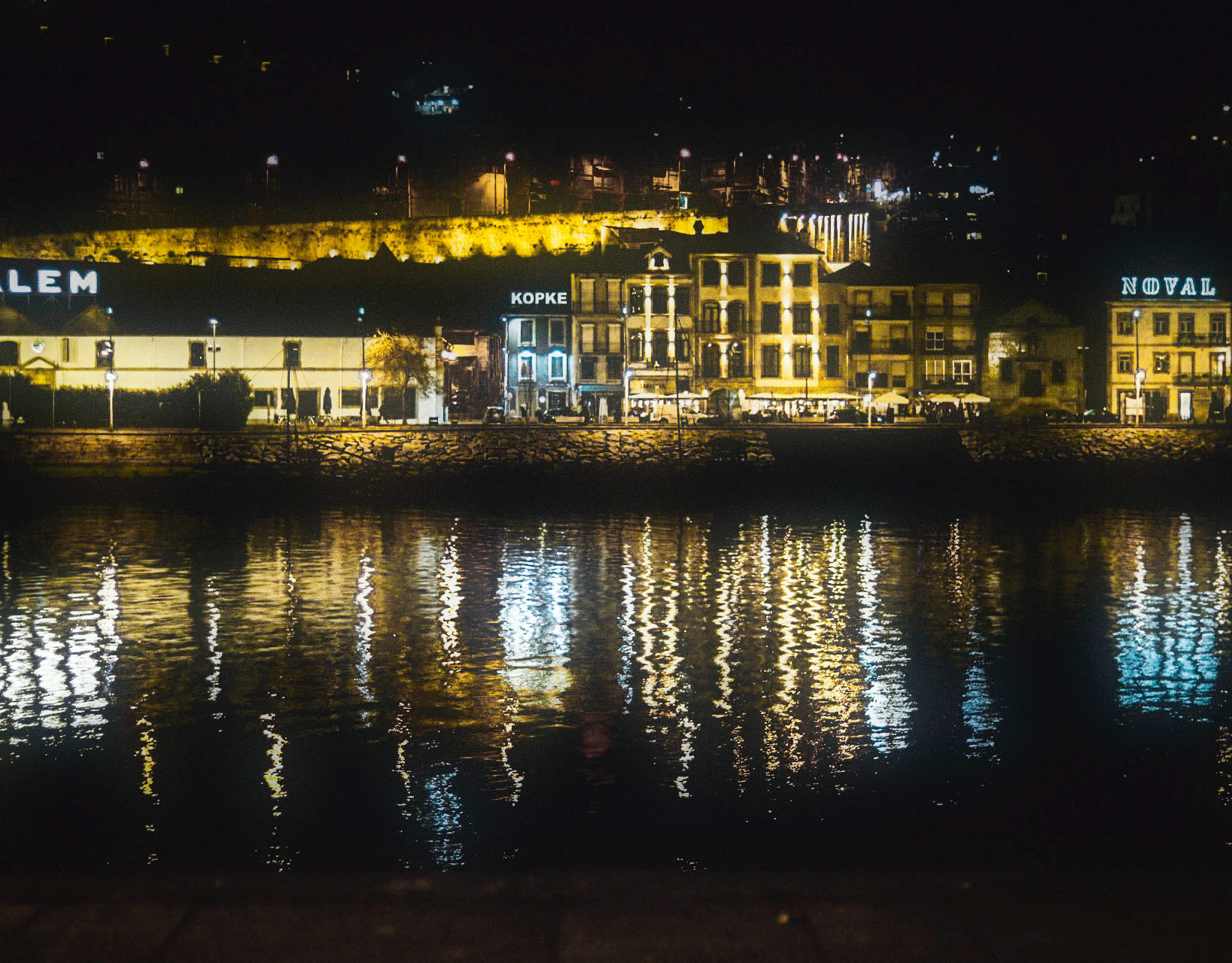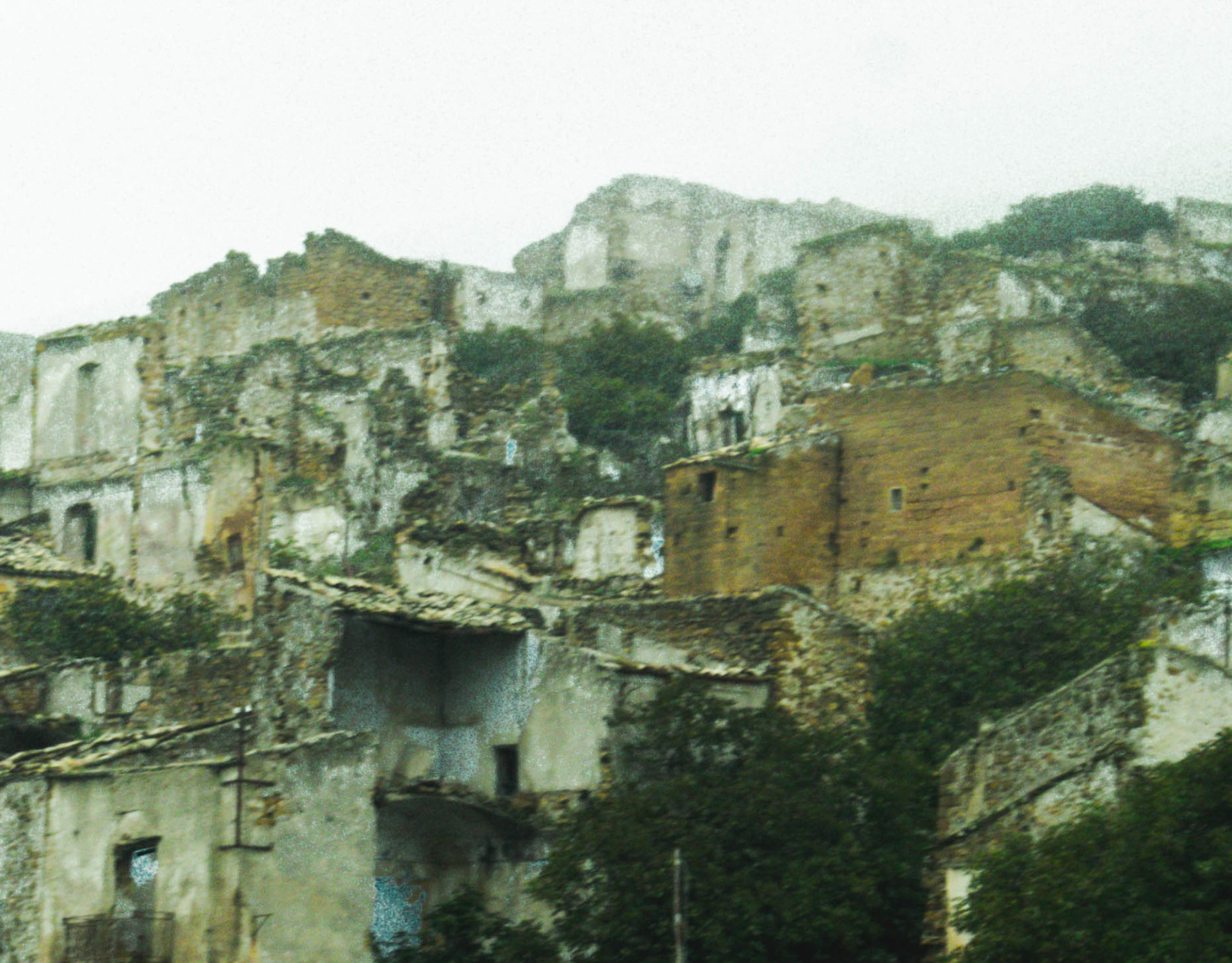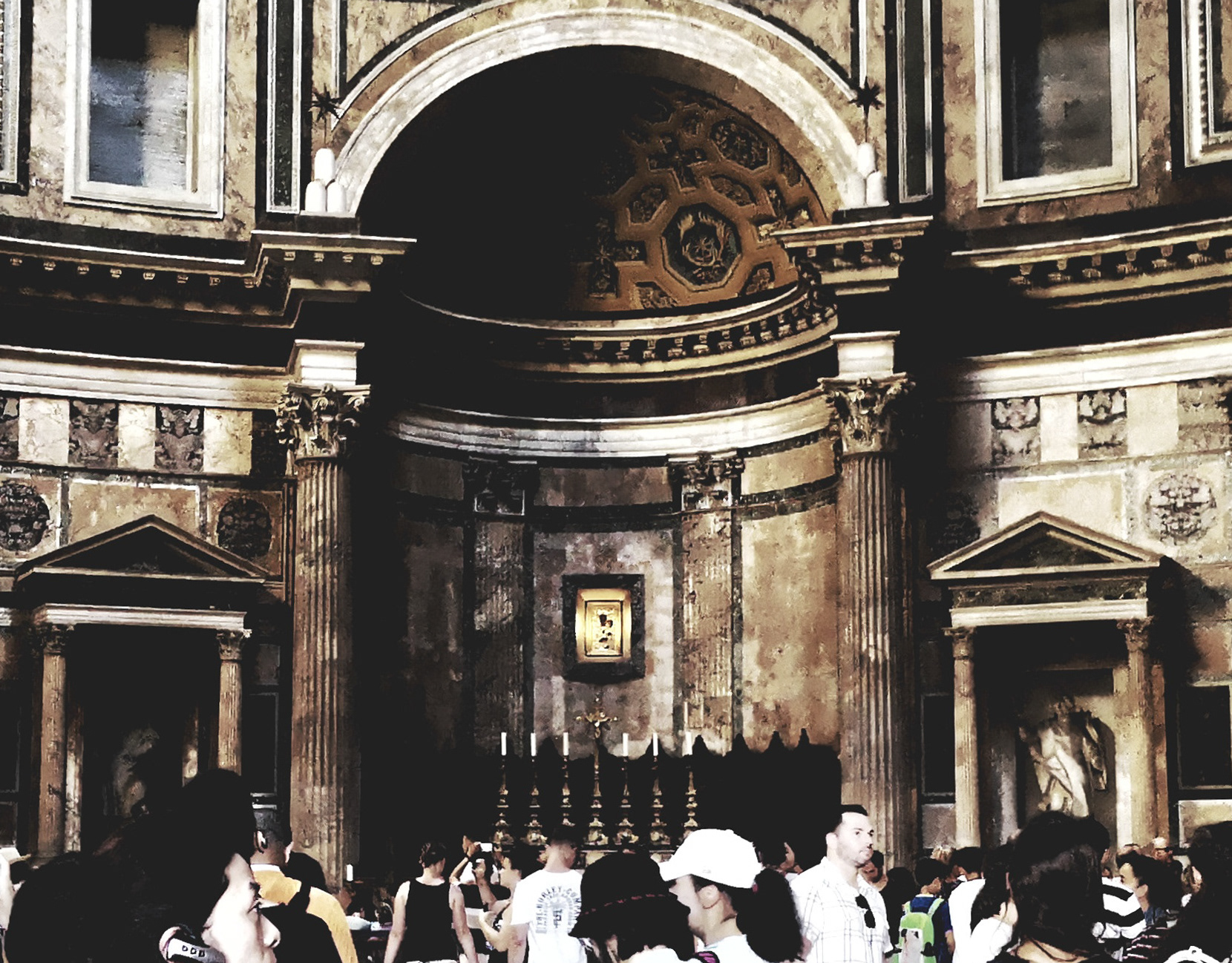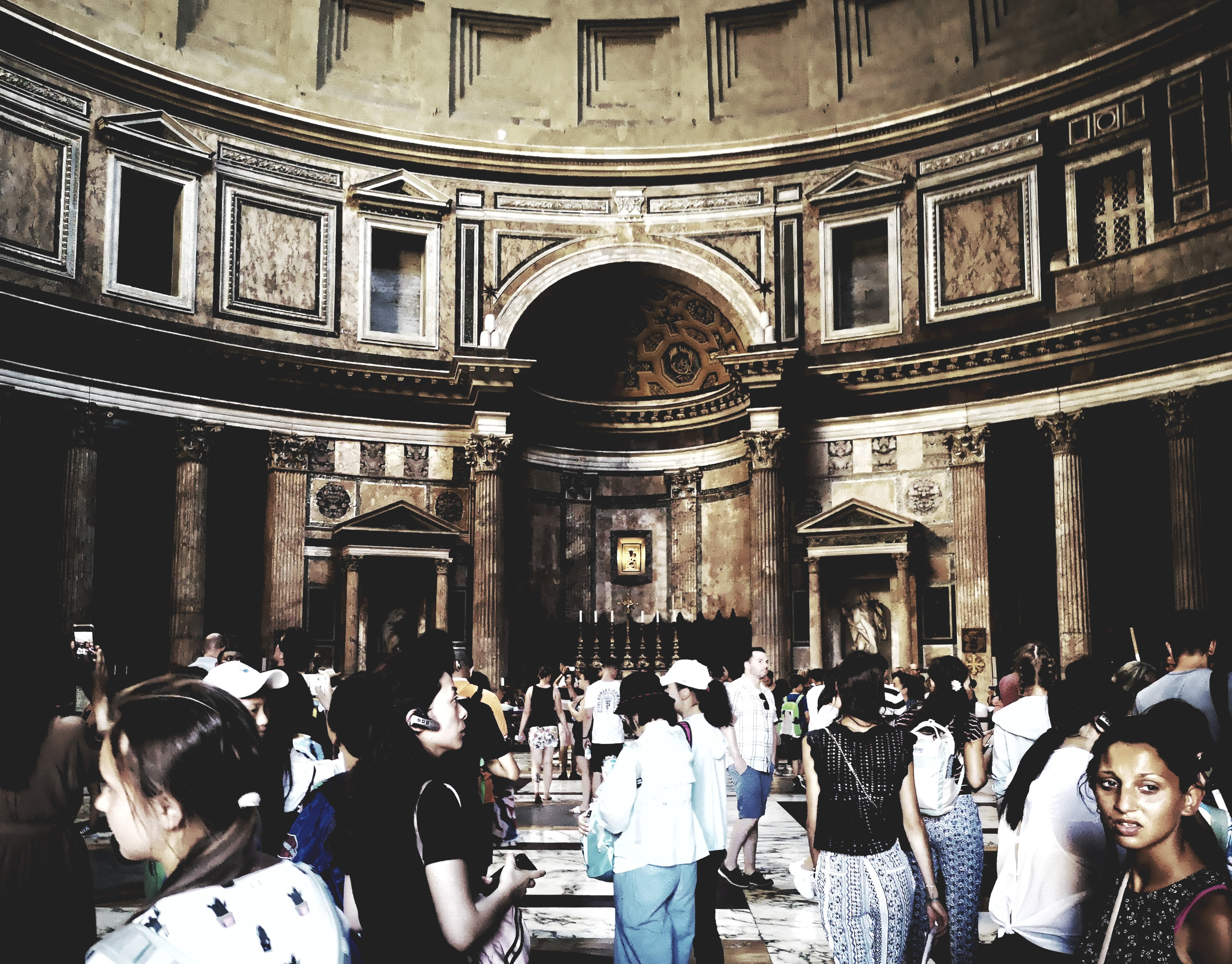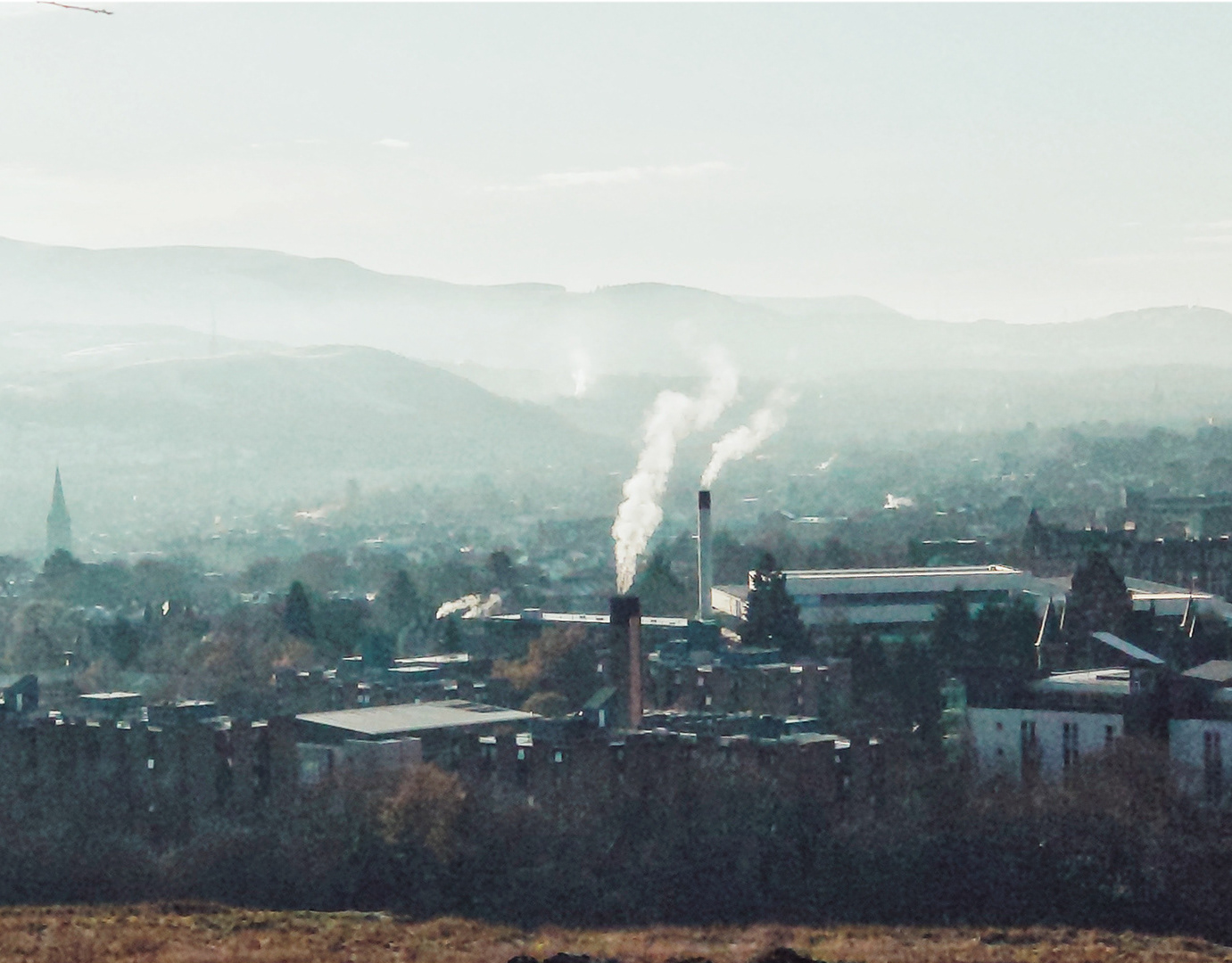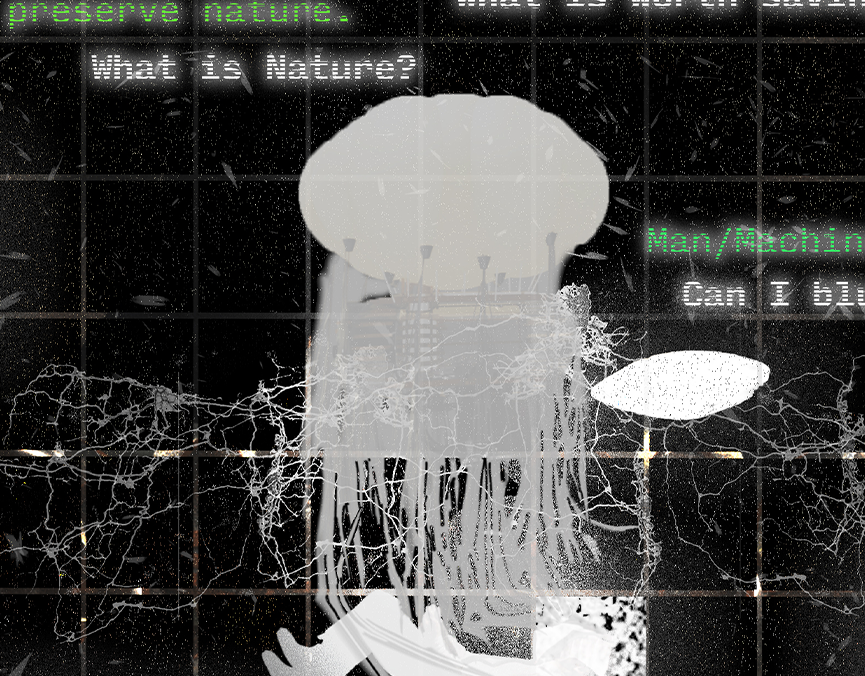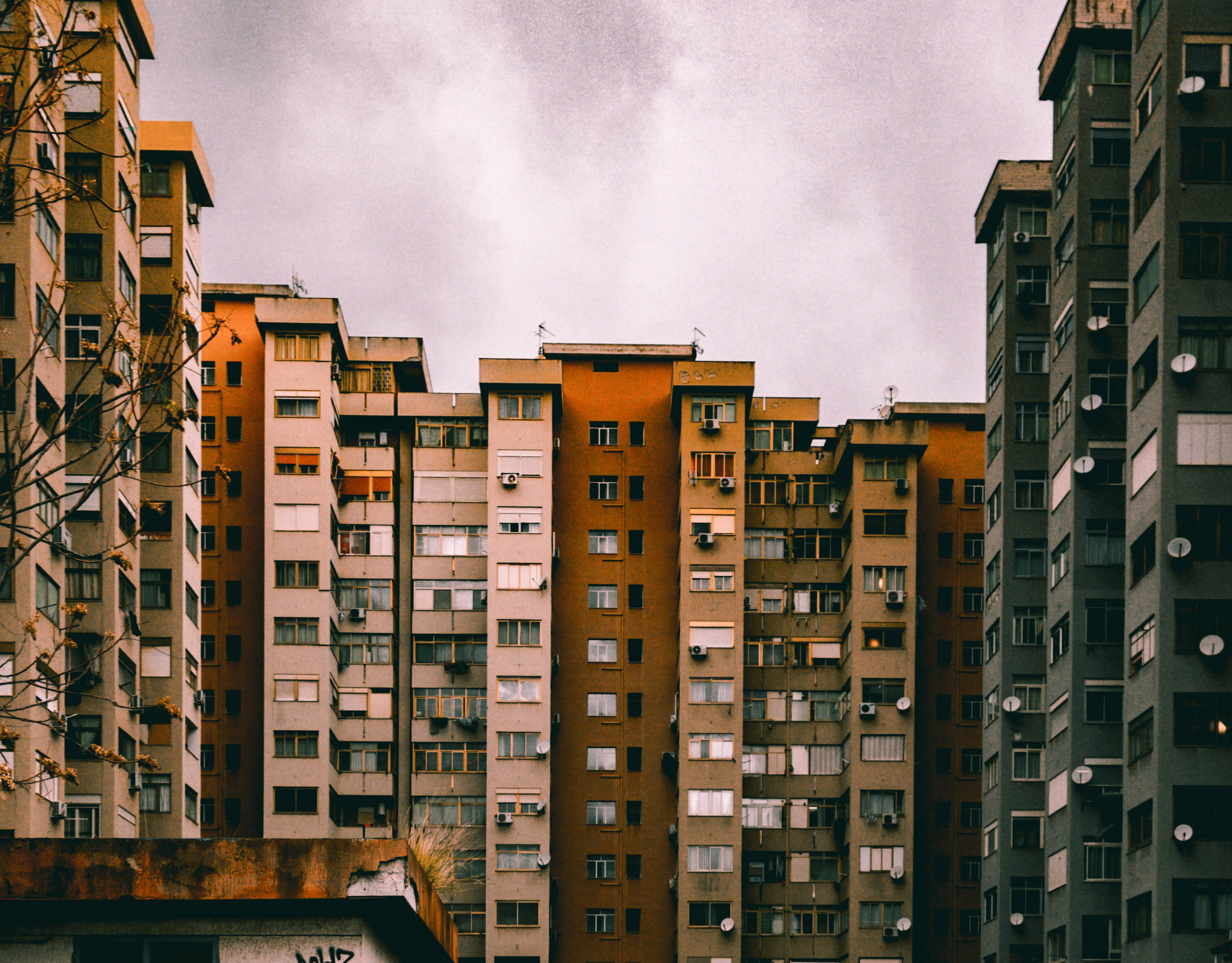This series of experiments acted as part of my design project this on the Cathedral for death during my fourth year of Architecture. In these experiments I test the ghostly attributes of my given material prompt: Marble.
In this series of experiments I explore the nature marble with relation to erosion, addressing chemical erosion, acid-etching, repeated motion and the affects of erosion on the material's translucency.
Due to the expensive sourcing of the material, the experiments undertaken were mainly done using analogous materials such as timber, foam etc. to simulate and expedite the erosive processes which would otherwise take months to generate results. However, two samples of marble were used within these tests as well.
Experiment I
Alginate vs. Acid.

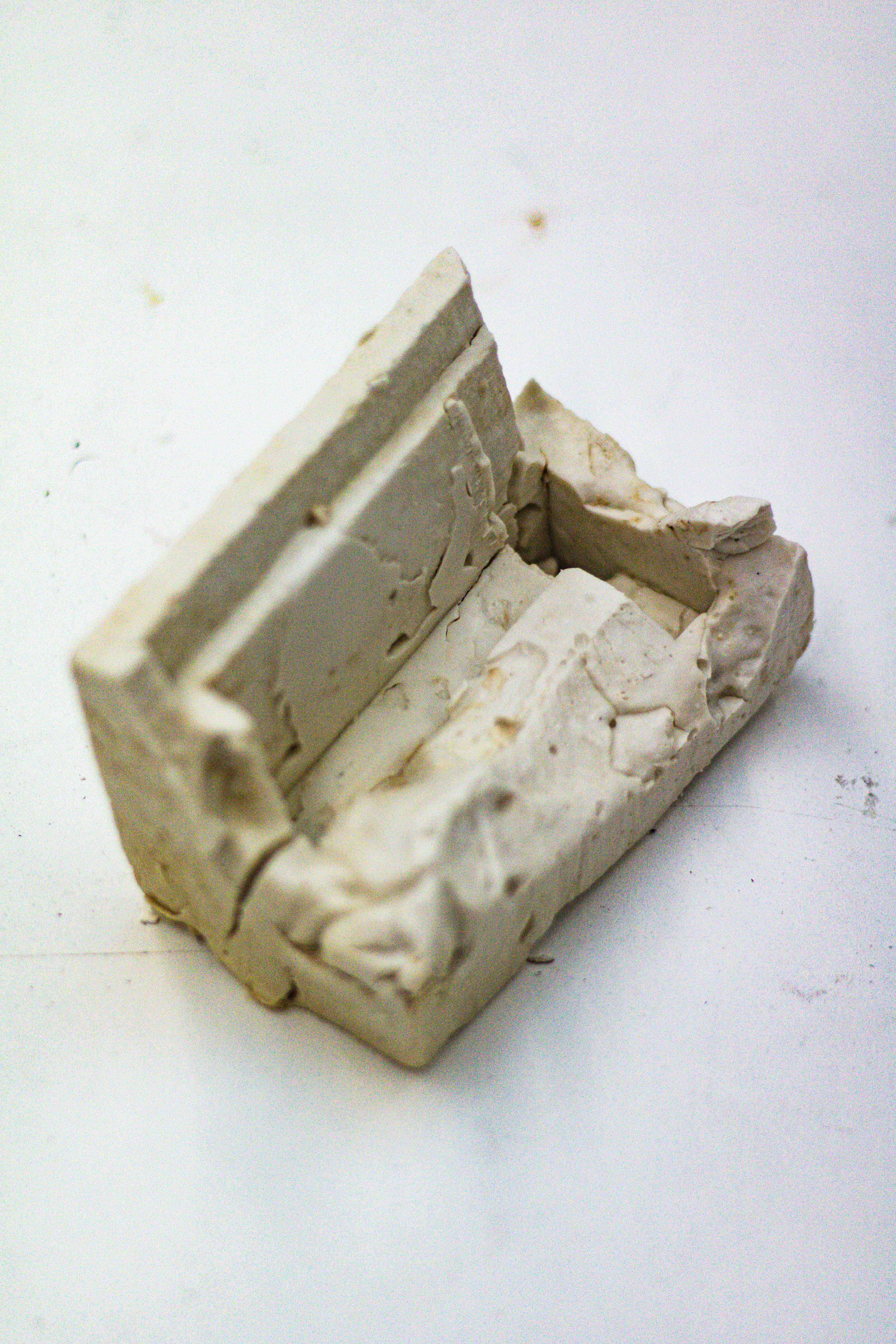
These were my first set of material tests using alginate as a hopeful substitute material to marble. However, I saw little change when exposing it to high acid substances to try and simulate chemical erosion. It did however, create some discoloration over a few hours of exposure.
Experiment II
Foam vs Chemicals.




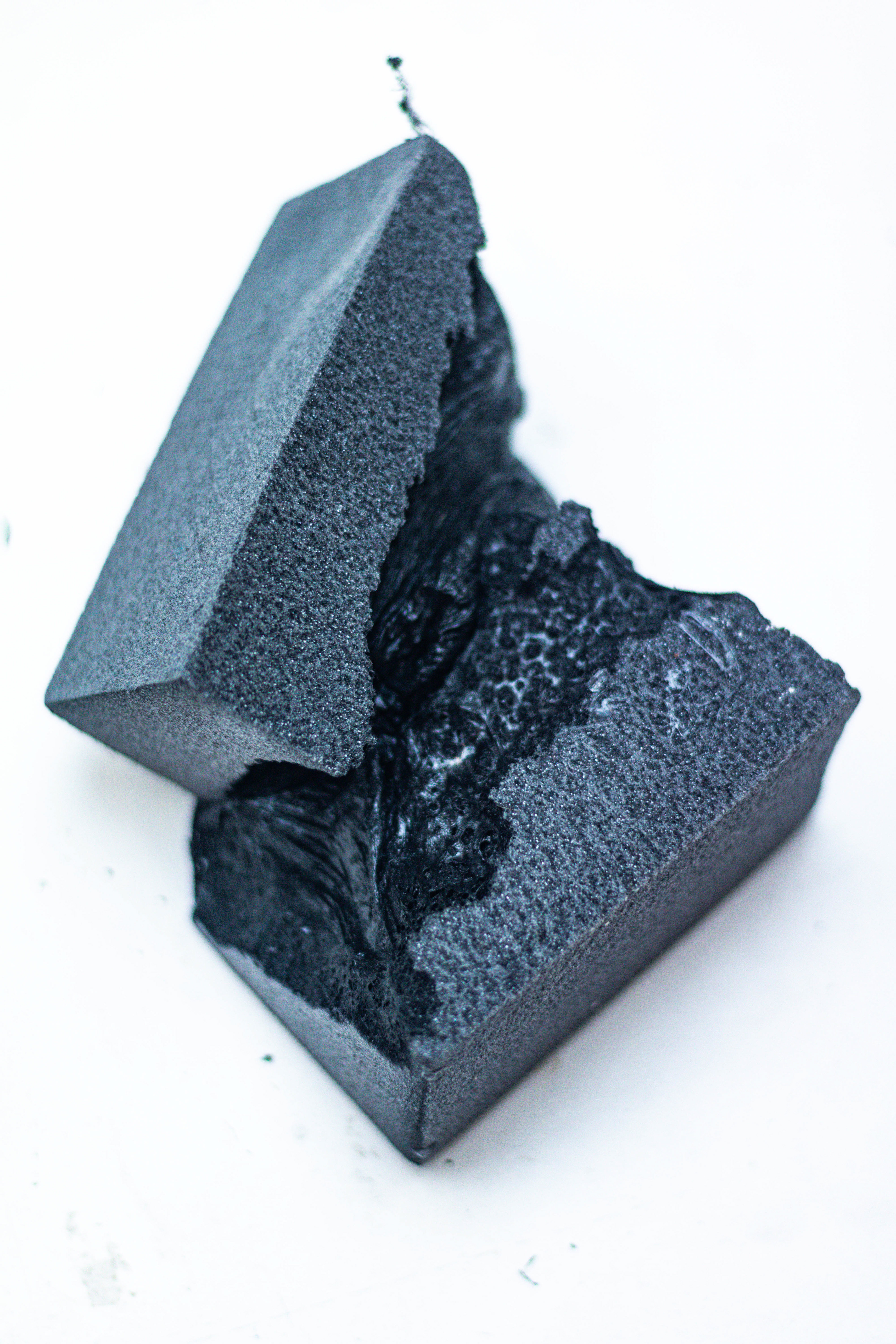
I first cut the foam into various shapes with differing crevasses and sizes. I then did at least two rounds of chemical pours allowing the chemicals to choose their paths through the material and corrode certain areas. This allowed me to quickly simulate the effects of erosion which would normally take years but in seconds. It also generated the most interesting forms and textures within the material.
Experiment III
Plaster vs Repeated Motion.

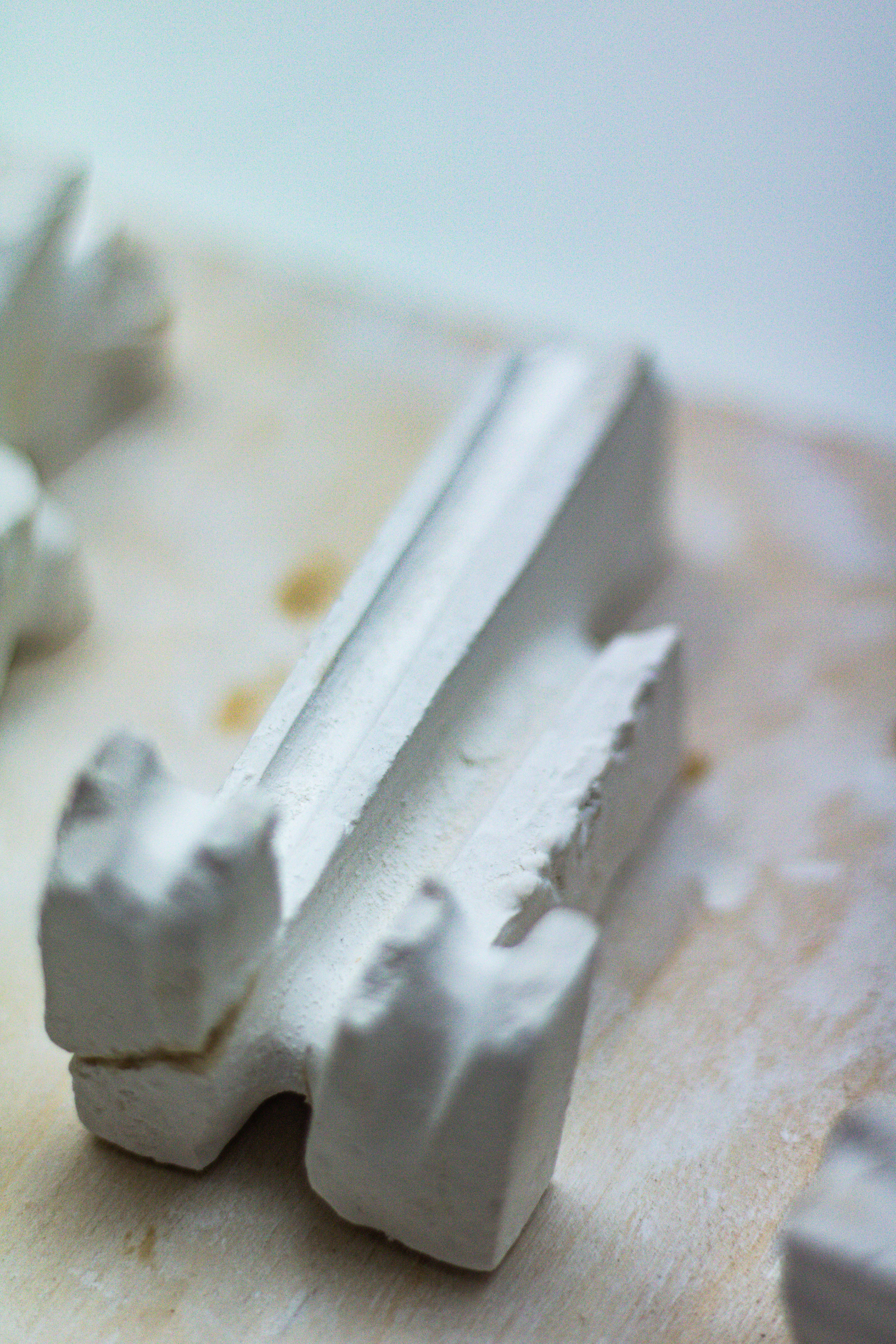

Due to the softer nature of the material, I used hand sanding tools to simulate the erosion that would occur over years of repeated motion on marble. Due to the nature of the material being much softer it allowed me to sculpt more organic shapes with greater ease.
Experiment IV
Timber vs Repeated Motion.



Here I used different sanding motions and sanding machines, allowing the machine to naturally choose the movement on the material to simulate the erosion that would occur over years of repeated motion and battering from the ocean. The harder nature of the timber made the process much longer than the erosion of repeated motion in the plaster.
Experiment V
Acid-Etch Simulation.
Using Chemicals to try and strip the paint on the timber structures to simulate the acid-etching process on marble.
Through these tests I discovered many ways in which I could encourage erosion, but the ones I felt worked the best among the analogous materials were the ones that exposed the materials life-cycle. The chemical erosion of the foam and the repeated motion erosion of the timber. I found these to be the most interesting (amongst the analogous tests) as they met somewhere in between structured and organic, almost creating a timeline of the material, exposing their transient natures through their ruination.
From Spectral Making to Shell of the Ghost:Model 02.
Experiment VI
Translucent Marble




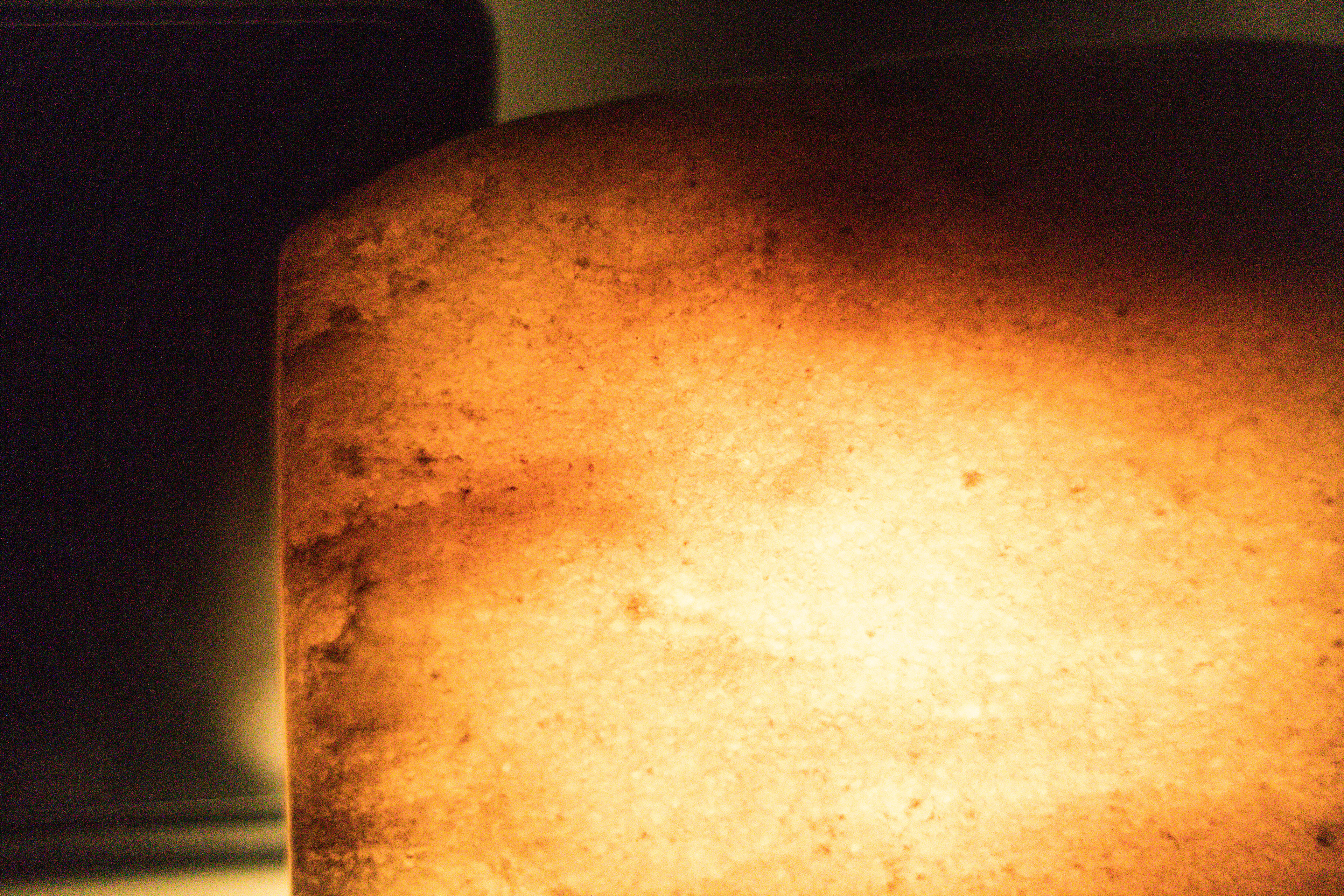
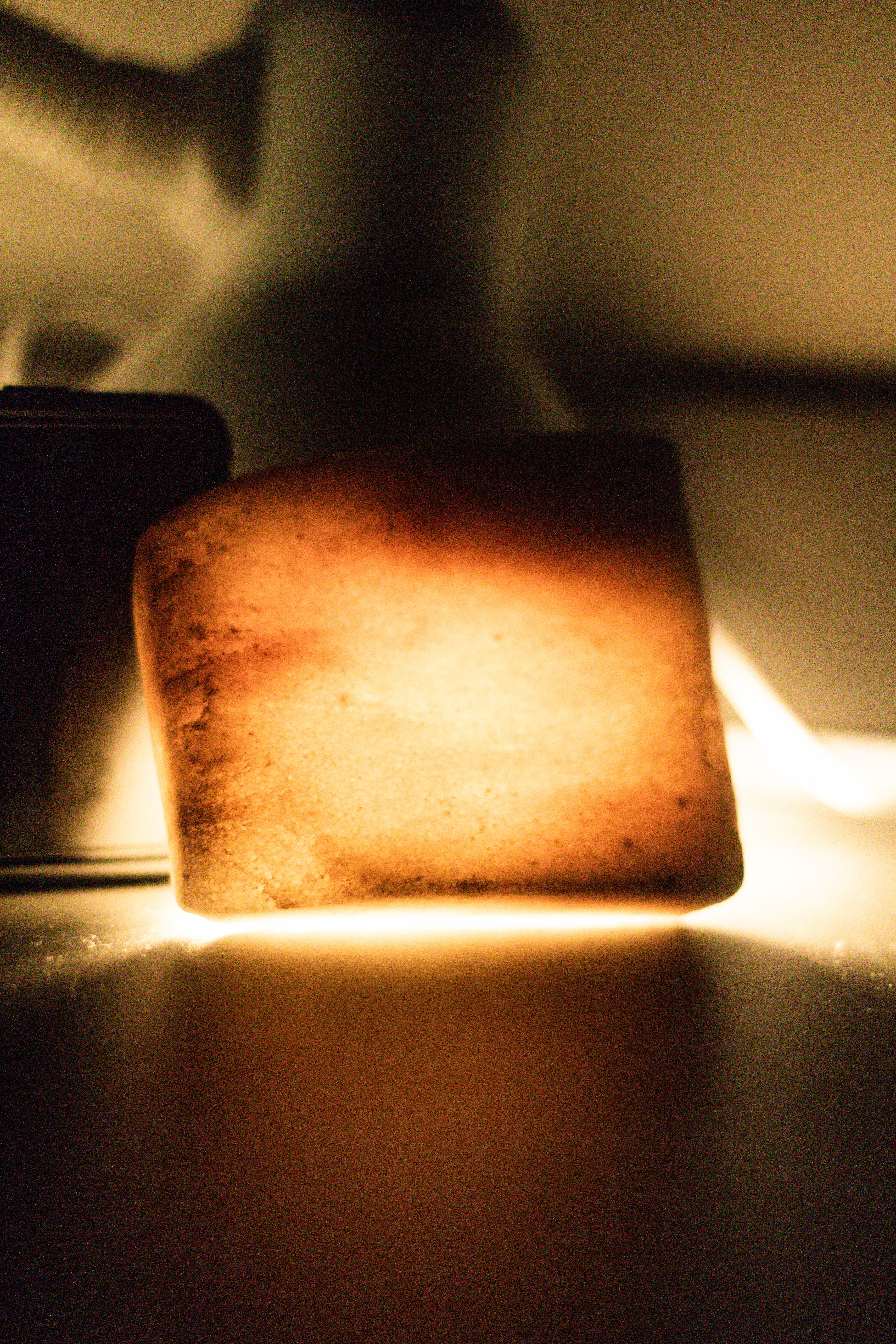
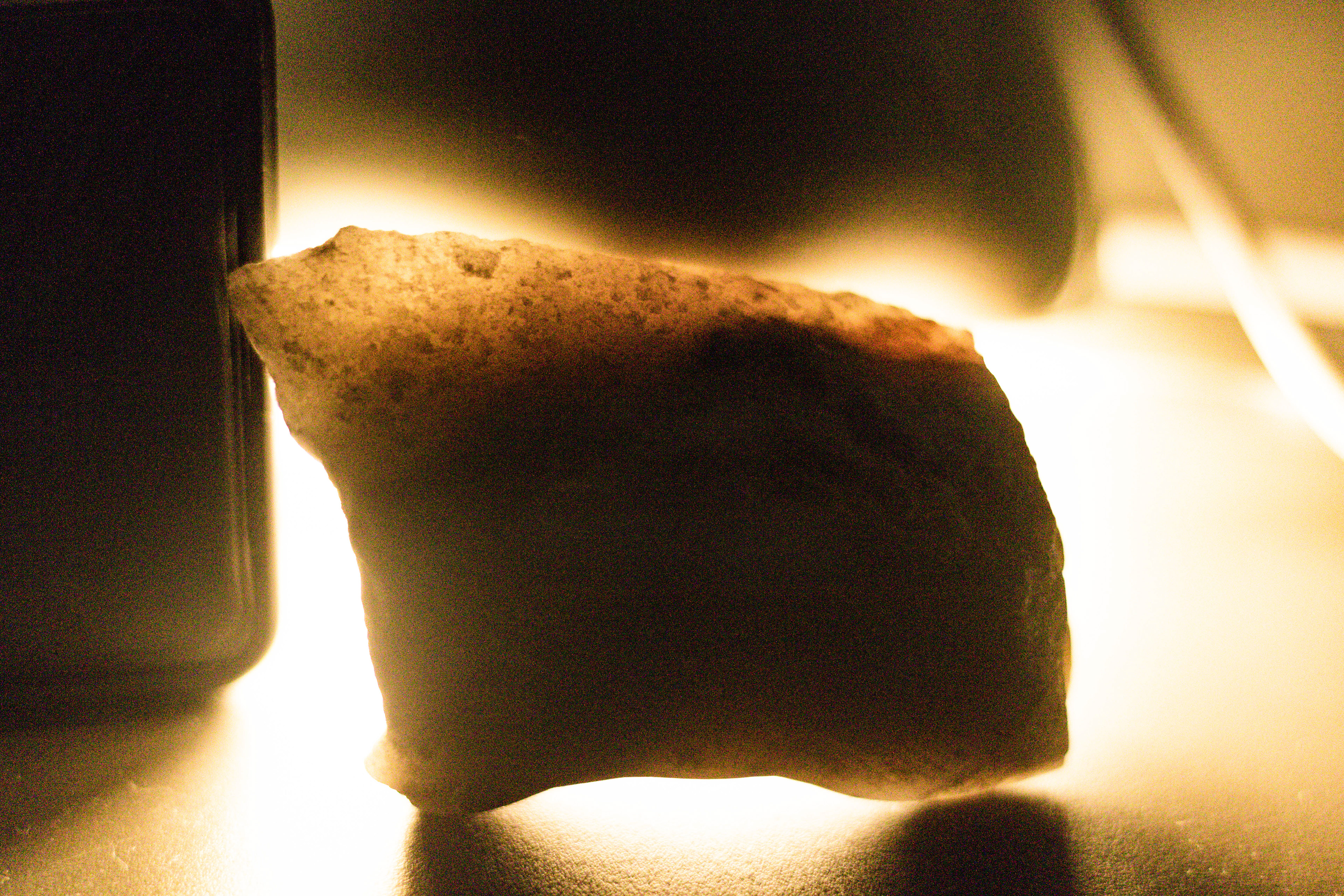

The final tests used small samples of marble which I sanded down and washed and then testes under light in a dark room to test for translucency. The material showed the following:
-Easy to sand and clean due to Calcium Carbonate structure.
-Thinner parts of the marble enabled light to pass through, generating a glowing veined effect. (Approximately 10mm).
